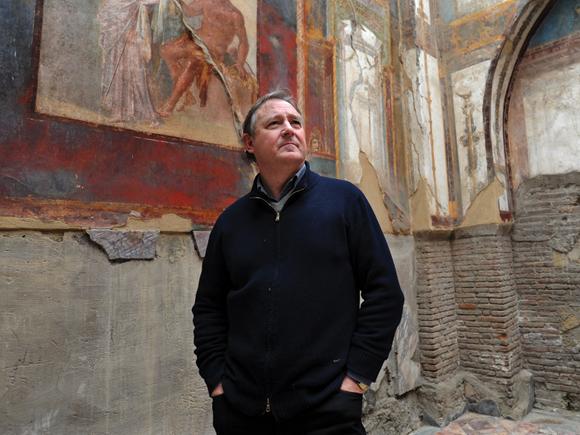Ten years ago Peter Nicholson made a BBC drama about Pompeii and its destruction. This fictionalised reconstruction, depicting made-up characters in togas saying made-up things, sounded cheesier than a pound of Brie, but was actually completely gripping: you knew what was coming, but you rooted for the characters all the same. And while it had all the ingredients of a tense thriller, nothing got in the way of telling the story clearly and intelligently.
One decapitated marble head of a goddess had hair that was painted Titian-red and eyes of limpid green
With the British Museum’s Life and Death in Pompeii and Herculaneum currently drawing in crowds, the BBC has moved on from the drama format and aired two documentaries this week. Each focuses, largely or to some extent, on Herculaneum, the city situated roughly 10 miles from Pompeii, on the Bay of Naples, which was destroyed with equal ferocity when Vesuvius blew her top in AD79.
The first, on BBC One, was fronted by former Apprentice sidekick and classicist Margaret Mountford. It was, given its subject, remarkably dull. It dutifully trudged through the facts, with the camera closing in on Mountford’s face every time she marvelled at this or that, just at it used to when her eyes would widen in mock astonishment at S'Alan's hapless apprentices. The damp climax was an artist’s facial reconstruction of the skulls of two individuals. But a more compelling documentary would trust more in the flesh on its subject than the wax flesh on a couple of mannequins. History is more interesting than that.
The second was last night’s The Other Pompeii: Life and Death in Herculaneum, which had the enthusiastic Andrew Wallace-Hadrill. He’s the director of the Herculaneum Conservation Project, and instead of all the marvelling to camera, we got a straightforward, lively but informative documentary of substance. Who knew the slopes of Vesuvius were once fertile vinyards? A contemporaneous painting shows Bacchus dressed in a robe of grapes looking at the great verdant mountain. An elderly Neopolitan still grows wine there, which goes by the name of Lacryma Christi.
We learned what this ancient population ate, what gods they worshipped, what furnishings they had (much of which survives remarkably intact, due to the greater heat of the ash that instantly carbonised wood in Herculaneum but not in Pompeii), how they painted and decorated the walls of their homes, as well as how brightly they painted their marble statuary. One decapitated marble head of a goddess had hair that was painted Titian-red and eyes of limpid green. Half her face might have been blasted off by the force of Vesuvius’s emissions, but her eyes were undimmed and her painted tresses still lustrous.
Moreover, we learnt an awful lot about ancient Roman social mobility. Up to 80 per cent of the population of Herculaneum were former slaves. They’d risen up through the social ranks to become free men and women and finally citizens. We know this because Roman administration was almost as thorough and as bureaucratic as our own. We learned that one young woman went to court to quash her slave status, an issue that hinged on whether her mother was a free woman at the time of her daughter’s birth, whilst one former slave ended up owning a rather plush villa.
Though one can be pretty sure it wasn’t all a bed of roses before the great apocalyptic event of AD79, we did get a nicely rounded picture of a highly complex society. To our surprise, it was one in which opportunity presented itself even to the lowest born.















Add comment